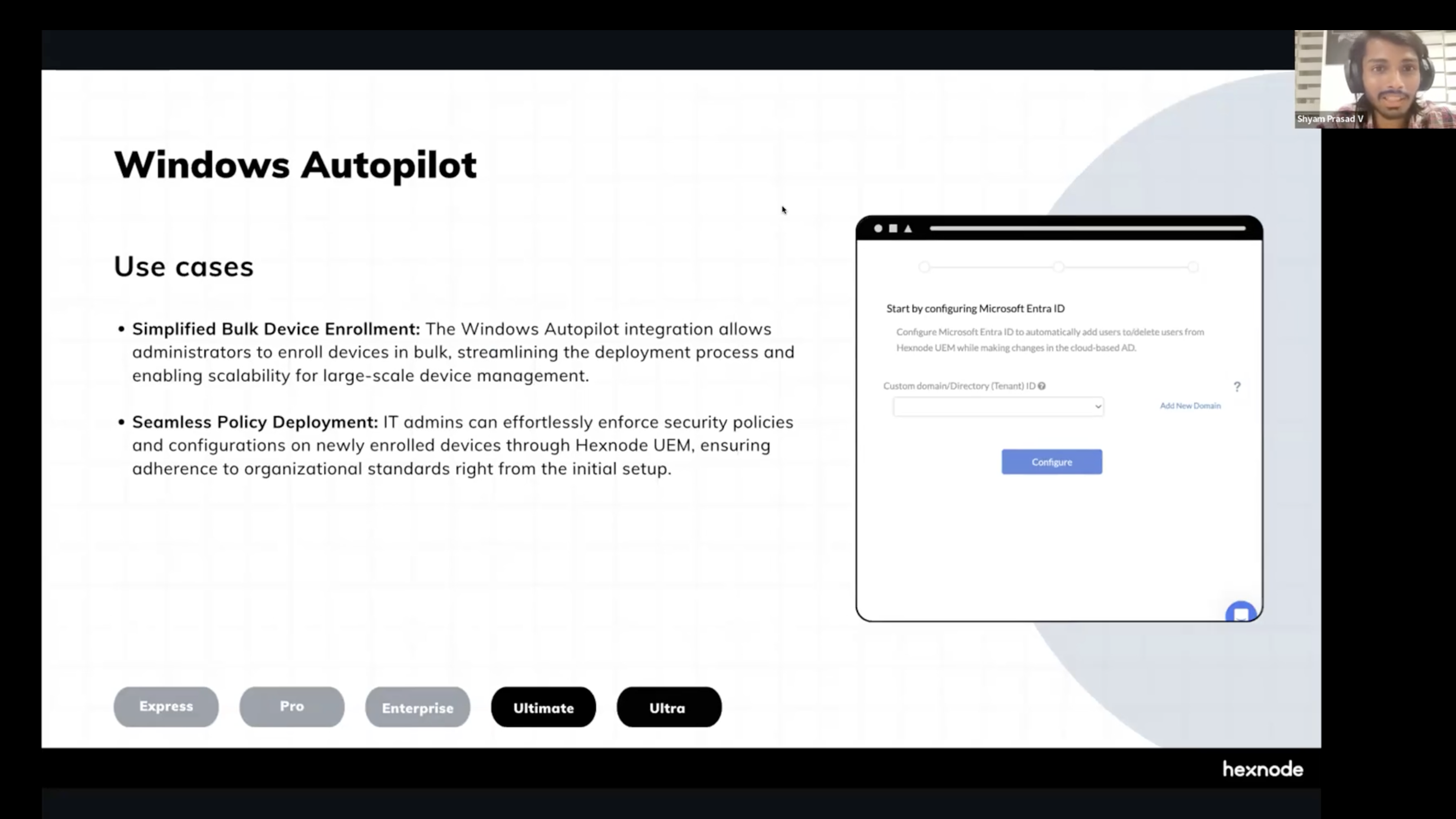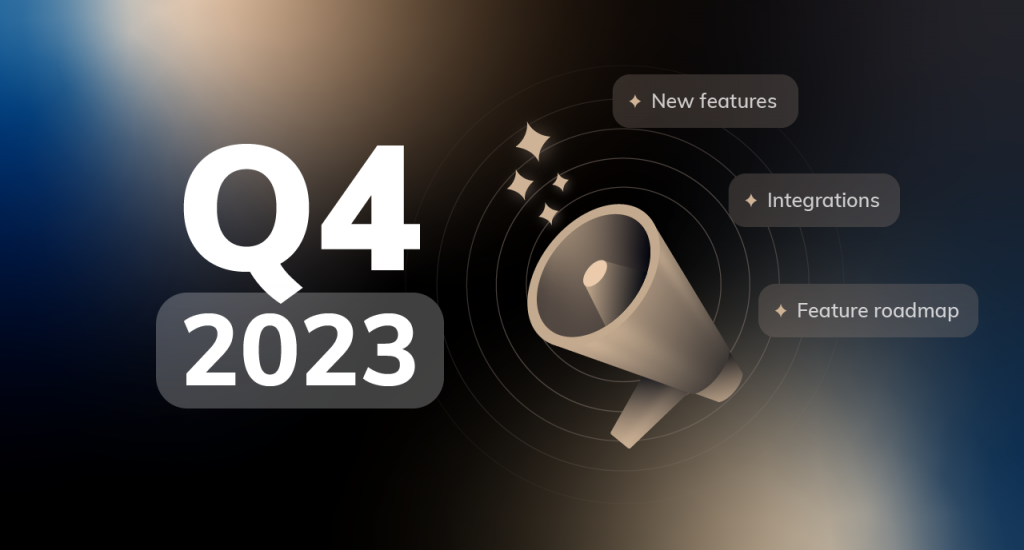As we step into 2024 with high hopes, Hexnode UEM is here to delight its customers once again. The spotlight is on the latest webinar series, “What’s New with Hexnode,” offering a comprehensive dive into all the exciting features and updates rolled out in the past quarter.
If you have missed the recent Q4 2023 session, no worries! We’ve got you covered with all the essential details from the webinar. Stay tuned for a feature-packed ride till the end! 😉
Q4 2023 Feature Rollout
In the last quarter of 2023, Hexnode UEM rolled out eight key features and updates aimed at making user and admin experiences smoother while addressing common challenges. From Hexnode Access to some powerful integrations, there’s a lot to explore and discover in this webinar. So, without any delay, let’s check out the main highlights of these features!
1. Hexnode Access for Windows
Hexnode Access simplifies the login process by enabling users to configure cloud authentication settings for their accounts. This means users can set up local accounts on Windows devices using their cloud identity provider credentials, saving them from manual setup hassles. Currently, Hexnode Access integrates with Microsoft Entra ID and Google Workspace, and soon, it will be compatible with Okta and OneLogin too.
2. Revamped scripting policy for Mac

Revamped scripting policy for Mac facilitate automated configuration updates for administrators across a large number of devices simultaneously. The login and startup scripts ensure an efficient user experience by configuring settings, deploying updates, launching specific applications, and enforcing security policies during login. Furthermore, logoff and shutdown scripts help in initiating data backup processes and performing cleanup tasks, promoting data integrity and optimizing storage space.
3. Windows patch management
Windows patch management offers IT admins granular control over the patching process. This means they can precisely manage update versions and types, providing a tailored approach to keeping systems up to date and secure. This feature works with both Windows Server Update Services (WSUS) and Windows Updates for Business (WUFB). The main use cases of this feature include:
- Granular control
- Scheduled restarts
- Improved workflows
- Flexible scanning and
- Efficient patch selection
4. Windows Autopilot

Windows Autopilot feature simplifies the setup of new Windows 10 and Windows 11 devices. IT administrators can easily enroll devices by registering on Hexnode through Microsoft Entra ID or the Microsoft Business Store. Admins can then effortlessly apply configurations and policies, ensuring a quick, secure, and personalized out-of-the-box experience for the devices. This feature is useful for simplified bulk device enrollment and seamless policy deployment.
5. BitLocker feature update
Through the BitLocker feature update, users can escrow their personal recovery code and enforce BitLocker encryption remotely. This enhances data recovery management for administrators by creating a robust backup of keys, strengthening the overall security framework for data protection. It ensures a reliable and efficient process for recovering crucial data.
6. Windows screensaver
Windows screensaver brings personalized customization to Windows devices. Users can choose from 3D text options and customize font styles, sizes, and colors. In this, IT admins also have control, allowing them to add custom screensaver files, including .scr files with unique features. Admins can also configure screensavers to activate after a defined period of inactivity, enforce password protection for screen unlock, and restrict users from altering screensaver settings on the device.
This feature offers organizations a chance to strengthen their brand identity by enabling employees to set corporate-themed screensavers. This allows for a consistent and branded visual experience across devices. It also helps to transform idle screens into informative displays, adding both functionality and a polished aesthetic to professional settings.
7. Vanta integration

Vanta integration with Hexnode UEM streamlines and centralizes compliance and security workflows, catering to organizations of all sizes. With this integration, Vanta collects info about devices in Hexnode and then checks compliance and identifies potential risks using the data. This allows IT admins to quickly address issues and offers streamlined solutions for audit processes.
8. Checkpoint integration
Hexnode integration with Check Point Harmony Mobile ensures robust security for employees’ mobile devices, defending against various threats across apps, files, networks, and posture management.
This integration enhances Hexnode’s mobile security management, making it easier to proactively address issues like device quarantine or policy enforcement. This ensures that devices pose no security risk to the organization’s resources and corporate assets.
How long does it take to implement Hexnode – A 3 step evaluation
Until we meet again!
There you have it, folks! These updates are not just features; they’re your backstage pass to a smoother, more secure Hexnode experience. So, stay tuned, stay connected, and keep rocking the Hexnode way! So, until we meet again with yet another list of features and updates, Bye-byeee!
14 days of free Hexnode!
Looking for a UEM solution that fits your needs and budgets? Check out Hexnode!
Join the tribe





